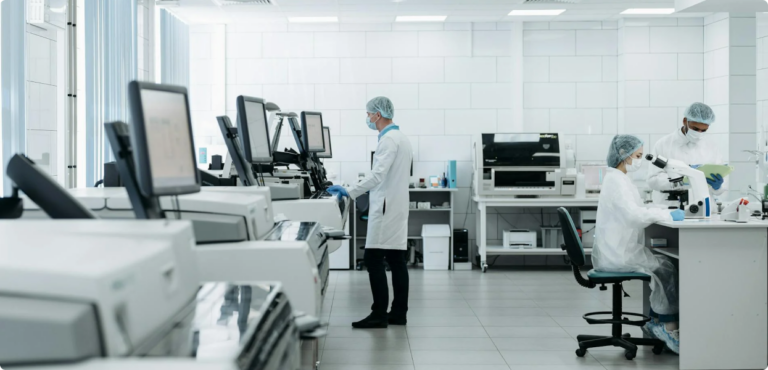The rapid advancement of deep learning models, edge computing, and the growing awareness of AI’s potential have led various industries to embrace and implement AI systems at scale. Among the most disruptive use cases of AI are those that rely on cameras and visual sensors. As the adoption of AI-driven camera systems continues to rise, the need to efficiently manage and sift through vast visual datasets to extract valuable subsets becomes increasingly critical.
However, the sheer volume of visual data being generated presents significant challenges. There simply aren’t enough data scientists to handle the workload, and much of the data curation required is laborious, repetitive, and an inefficient use of these highly skilled professionals’ time. This is where a shift towards data-centric AI becomes essential.
Download Our eBook: The Ultimate Guide to Data-Centric AI for Visual Data
To delve deeper into how data scientists are emphasizing the importance of high-quality data, download our newest ebook, The Ultimate Guide to Data-Centric AI for Visual Data.
How Visual Data is Used Today
Currently, there are over 50 billion cameras worldwide, and this number is expected to keep rising. These cameras support AI-enabled use cases across a wide range of fields, including:
- Automotive (e.g., autonomous vehicles)
- Healthcare
- Retail
- Security
- Materials Inspection
For example, consider a scenario where a data scientist needs to sift through a dataset of 1,000,000 images collected by test vehicles to identify 100 frames that depict a construction zone. While one could downsample the dataset to around 10,000 images, manually sifting through these images is still an exhausting and time-consuming task—unless a coworker has already labeled the images. Without proper labeling, finding these specific images becomes a tedious process.
Challenges Faced by Companies Working with Visual Data
While AI models have become more powerful, the tools for sourcing, selecting training data, and diagnosing model output have not kept pace. This has led to high-demand, expensive data scientists and engineers being bogged down by repetitive and demoralizing tasks, reducing their efficiency and productivity.
For both data scientists and organizations that rely heavily on visual data, the challenges of visual data science and visual data management are only growing.
Analyzing Visual Data
One of the most significant challenges is gaining a comprehensive view of a large visual dataset. Visualizing vast volumes of image and video data is crucial for understanding the dataset’s latent structures, natural clusters, patterns, and common characteristics. However, this task becomes even more daunting when attempting to map these concepts across multiple datasets.
Transforming high-dimensional images into clustered 2D embedded views offers a better way to build intuition about the dataset, but this process requires advanced tools and techniques.
Addressing Biases in Visual Data Sets
Another critical challenge is the presence of biases within visual datasets. For instance, visual images collected from smaller cities are likely to be more homogenous than those from major metropolitan areas. Training a model on such biased data would result in poor performance when deployed in diverse environments. Data scientists must therefore be vigilant in identifying and correcting these biases to ensure accurate and reliable model performance.
The Need for Advanced Visual Data Tools
Historically, tools to automate and assist with visual data processes have been scarce, leading data science teams to develop homegrown, piecemeal solutions. However, these solutions often lack scalability, are difficult to maintain, and are not designed for long-term use.
How Data Science Teams Can Better Utilize Visual Data
One of the most significant issues with managing visual data is the creation of effective training datasets. Data scientists must identify the images they need more of, as well as new, novel data to balance and enhance the dataset. This is not a one-time task but rather an ongoing process that involves repeatedly examining and clustering the data to ensure comprehensive coverage of all relevant scenarios.
The Akridata Solution: Revolutionizing Visual Data Management
The tools that data science teams need to tackle the challenges of visual data are now available. Akridata Data Explorer is a custom-developed ML platform built specifically for exploring, analyzing, and curating exascale visual data training sets.
Key Features of Akridata Data Explorer
- Cluster, Select, and Compare Visual Data at Scale: Handle massive datasets with ease, enabling faster and more accurate data curation.
- Reduce Data Selection and Curation Time by up to 15x: Save time and resources by automating tedious data management tasks.
- Improve Labeling Spend Effectiveness by up to 25%: Ensure that your data labeling efforts are efficient and cost-effective.
- Accelerate Path to Model Accuracy: Visualize data drift and address class imbalances to enhance model performance.
Diverse Applications of the Akridata Platform
The Akridata platform is already being utilized across various industries, including:
- Autonomous and Assisted Driving
- Smart Cities
- Medical Imaging
- Genomic Analysis
- Cashier-less Retail
- Manufacturing
Available as a SOC 2-compliant SaaS product and an on-premise solution for customers with stringent security requirements, Akridata Data Explorer is designed to meet the most demanding needs of today’s data-driven enterprises.
Conclusion: The Future of Visual Data Management
As visual data continues to grow in volume and complexity, the need for advanced tools and techniques to manage it will only become more critical. Akridata’s Data Explorer platform offers a comprehensive solution, enabling data science teams to efficiently handle the challenges of visual data and focus on what truly matters—developing accurate, reliable AI models that drive innovation.
To learn more or to get started with Akridata Data Explorer, visit us at akridata.ai or click here to register for a free account.




No Responses